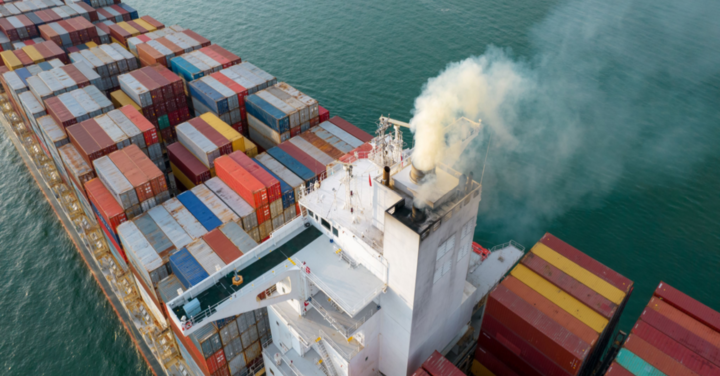
How to Calculate Emissions in Seafreight With Ease
Even with unrelenting pressure on supply chains worldwide, the focus on sustainability and eco-friendly operations continues to gain momentum. This interest from customers and investors alike has shippers and carriers everywhere wondering how to calculate CO2 emissions and what to do with those calculations once they have them. With the changes COVID shutdowns brought, the increase in e-commerce and global shipping, and the increasing traffic along ocean freight lines, carbon emissions are at an all-time high. The more freight there is to move, the more emissions and pollution there is to worry about, especially when freight value is at risk.
According to a White House report released earlier in 2022, rising shipping costs and expenses, compounded by long port delays and congested cargo shipping routes, have garnered international attention. The focus in 2022 and beyond is securing short-term stability and the potential for long-term growth as recovery continues. Today’s goal is to help shippers figure out how to calculate emissions and then keep them as low as possible. Read on to learn more on how to calculate CO2 emissions, reduce greenhouse gas (GHG) emissions, and improve sustainability.
Why Forwarders and Shippers Need to Estimate Emission Levels and Plan Accordingly
Forwarders, carriers, and shippers alike need to know how to calculate CO2 emissions to understand their impact and their role in current sustainability movements. Many of the shifts in trade volume and CO2 levels have met and often exceeded predictions for 2021, and they are still playing out in 2022. Trade levels continued to increase as global economies continue to see an overall rise in e-commerce, online shopping, global importing and exporting, and shipping and transportation demands.
Understanding the impact of carbon emissions on sea freight trends, and knowing how to calculate CO2 emissions and monitor carbon footprints, can help shippers and freight forwarders in several ways:
- Highlight emission risks during procurement
- Identify areas for improvement and opportunities to reduce emissions
- Prove reductions and improvements in intensity
- Avoid greenwashing
- Attract new customers who are sustainably minded
- Identify excessive waste and underperformance areas
By figuring out how to calculate emissions and implement an emissions plan, forwarders, shippers and carriers can reap the benefits and prepare for whatever the market has in store.
How to Calculate CO2 Emissions in Ocean Freight With Expert Guidance and Innovative Tools
At the heart of emissions control and sustainability, protocols are the underlying need to understand how to calculate CO2 emissions and manage shipping routes and services. It is not enough to simply know the number of carbon emissions detected. The true purpose of emissions tracking and monitoring is to curb waste and reduce pollution. This process is not just a “shortest distance from Point A to Point B” sort of logistical planning. It is about calculating the most accurate route based on changing vessels, fuel uses, weather, traffic levels and particular port congestion, and considering downstream or upstream OTR transit as well.
Tracking emissions in maritime trade and determining how to calculate emissions is made easy with professional platforms and applications. Searoutes offers a range of services that make them a standout example of innovative policies concerning CO2 emissions tracking within the ocean transportation industry.
- Expert methodology and processes
- Insider perspective and resources
- Innovative tools and applications
- Integrated platforms and tools
- Fully onboarded technology
- Real-time tracking and monitoring
- Accurate statistical analysis
- Insightful data for voyage planning
- Customized shipping guidance plans
- Adaptable route scheduling
- Scalable logistics planning options
With the right industry partnership, determining how to calculate CO2 emissions and how to respond to that data becomes much more straightforward.
Choose SeaRoutes to Maximize Accuracy When You Calculate CO2 Emissions Across All Transport Modes
With everything that mindful shippers, green carriers, and innovative forwarders have to deal with today, they don’t want to spend a lot of time stumbling over the question of how to calculate CO2 emissions. By partnering with transportation experts, it becomes easier to understand how to calculate emissions and make changes that can have a positive impact. Contact Searoutes today to get started.